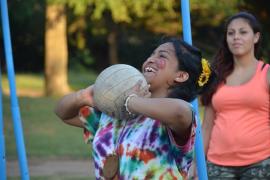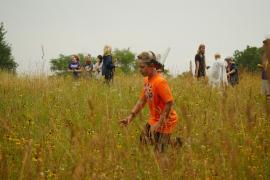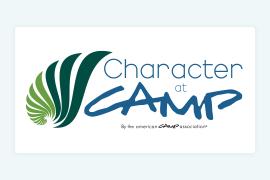Last fall, we shared with you the ways we adapted our program quality work to the COVID-19 pandemic — you can find that blog here. As you’ll read in that blog, we had planned to conduct site visits and other in-person trainings during the summer of 2020 but that wasn’t possible with COVID-19. Instead, we pivoted toward a virtual format that used the Community of Practice we assembled last spring to achieve our outcome of building systems of continuous improvement within our camps and greater community. We asked our community members (see our list of community members here) to participate in one of three working groups: Continuous Quality Improvement (CQI) Systems Design, Assessment Development, and Toolkit & Resource Development (see the visual below) and we invited everyone to participate in the Diversity, Equity, & Inclusion group as they desired and had time to do so.
This blog is the first in a five-part series where I will dive deeply into the work of our working groups and describe our plans for our Program Quality Coach/Observer processes. Today’s blog will focus on the Continuous Quality Improvement (CQI) Systems Design Working Group.
Purpose of the CQI Systems Design Working Group
This working group’s purpose is to develop a continuous quality improvement system that lasts within ACA camps and operates at different levels of camp, from the board level to the daily interactions with campers. This group, comprised of camp professionals and youth development professionals, is working together to accomplish the following:
- Develop a recommended timeline for how long it takes to go through the prepare — assess — plan — improve cycle (see description below)
- Map roles and responsibilities for people implementing continuous quality improvement practices at camp
- Design system features at the policy, organizational, and point-of-service levels to sustainably embed continuous quality improvement
- Define and institutionalize policies and practices that prioritize equity to support sustainability and alignment across multiple levels of the system
Prepare — Assess — Plan — Improve Cycle
Within the Initiative, we define "continuous quality improvement" as a process that involves a longterm commitment to a cycle of continually assessing and interpreting data, followed by implementing modifications to programs, policies, and practices geared toward positive changes. This process is comprised of a prepare — assess — plan — improve cycle, based on the Weikart Center model. This cycle involves assessing organizational capacity, collecting and interpreting data, planning how to modify programs based on findings, and implementing any changes.
What are systems?The structures within our practice that support what we do.
|
Program Quality Systems
In program quality work, systems need to have the same components of being valued, embedded, and tied back to written protocols or objectives. One of the goals of this working group is to identify how the value, embeddedness, and structure of a sustainable system of program quality can be interwoven into existing camp systems.
The CQI Systems Design working group has identified necessary components of a sustainable system to embed in preexisting ACA systems. An example is creating multiple entry points to the program quality system so that camps who are at different levels of readiness can jump in and participate. Another example is encouraging and developing an organizational culture for assessment and learning to support continuous quality improvement.
The working group is now building out each component to ultimately provide recommendations on how we take the work accomplished through the Initiative and embed it within ACA moving forward. An idea of how we will do this is with a cohort model, where camps who are committed to continuous quality improvement will be encouraged to join a cohort of likeminded professionals to reflect, learn, and improve through participating in trainings, site visits, and utilizing the Program Quality Toolkit.
Keep an eye out for our next Camp Program Quality Initiative blog post on our Assessment Development working group! If you’re interested in learning more, please contact me at [email protected].
Thanks to our research partner, Redwoods.
Additional thanks goes to our research supporter, Chaco.
The views and opinions expressed by contributors are their own and do not necessarily reflect the views of the American Camp Association or ACA employees.





